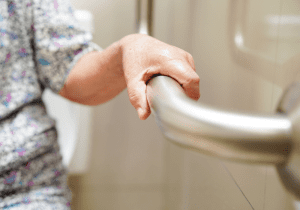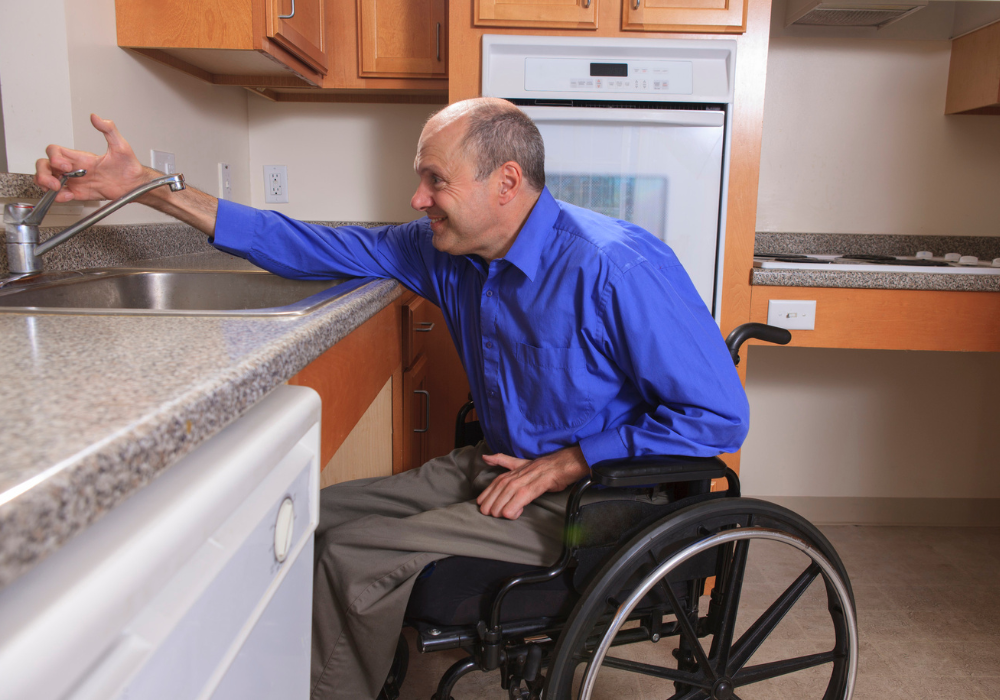Creating a home environment that is accessible and functional for everyone is essential for promoting independence and improving quality of life, especially for individuals with mobility challenges or disabilities. Fortunately, there are many simple renovations and modifications that homeowners can make to improve accessibility and enhance the overall usability of their living space. In this blog, we’ll explore some practical and cost-effective renovation ideas for improving accessibility in the home.
 Install Grab Bars and Handrails
Install Grab Bars and Handrails
Installing grab bars and handrails in key areas of the home, such as bathrooms, hallways, and staircases, can greatly improve safety and mobility for individuals with limited mobility or balance issues. Grab bars provide support and stability when navigating slippery surfaces, while handrails offer additional support when ascending or descending stairs. These simple additions can help prevent falls and accidents, providing peace of mind for both residents and visitors.
Widening Doorways and Hallways
Widening doorways and hallways is another effective way to improve accessibility and maneuverability for individuals using mobility aids such as wheelchairs, walkers, or scooters. By increasing the width of doorways and hallways, homeowners can create more spacious and barrier-free pathways throughout the home, allowing for easier navigation and movement between rooms. This simple renovation can significantly enhance the overall accessibility and functionality of the living space.
 Installing Ramps or Lifts
Installing Ramps or Lifts
For homes with stairs or elevated entrances, installing ramps or lifts can provide a safe and accessible means of entry for individuals with mobility challenges. Ramps offer a gradual incline that allows for easy access without the need for stairs, while lifts provide vertical transportation between different levels of the home. These adaptations can make it easier for individuals with mobility issues to enter and exit the home independently, improving overall accessibility and convenience.
Lowering Countertops and Cabinets
Lowering countertops and cabinets in the kitchen and bathroom can make these spaces more accessible and user-friendly for individuals using wheelchairs or mobility scooters. Lowering countertops to a comfortable height allows for easier reach and access to sinks, appliances, and storage areas, while lower cabinets provide convenient storage solutions that are within reach for individuals with limited mobility. These simple adjustments can greatly improve the usability and functionality of these essential areas of the home.
Installing Lever-Style Door Handles and Faucets
Replacing traditional door knobs and faucet handles with lever-style handles can make it easier for individuals with limited hand dexterity or strength to operate doors and faucets independently. Lever handles require less grip strength and hand coordination compared to traditional knobs, making them more accessible for individuals with arthritis, hand injuries, or other mobility impairments. This simple swap can greatly enhance the accessibility and usability of doors and fixtures throughout the home.
Improving accessibility in the home doesn’t have to involve extensive renovations or costly modifications. By implementing simple and practical changes such as installing grab bars, widening doorways, installing ramps or lifts, lowering countertops, and replacing door knobs with lever handles, homeowners can create a more accessible and inclusive living environment for everyone. These small adjustments can have a big impact on the safety, independence, and quality of life for individuals with mobility challenges or disabilities, allowing them to navigate and enjoy their homes with greater ease and confidence.

